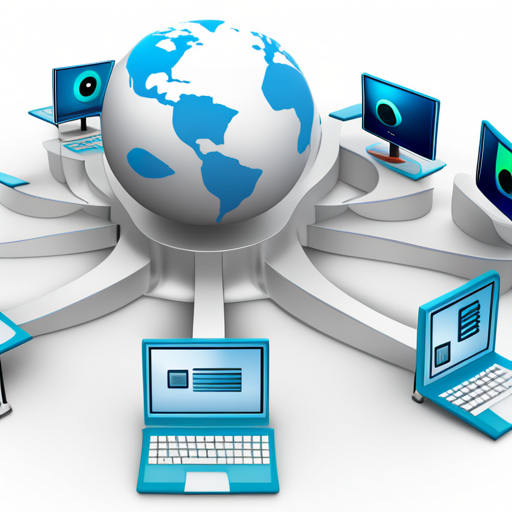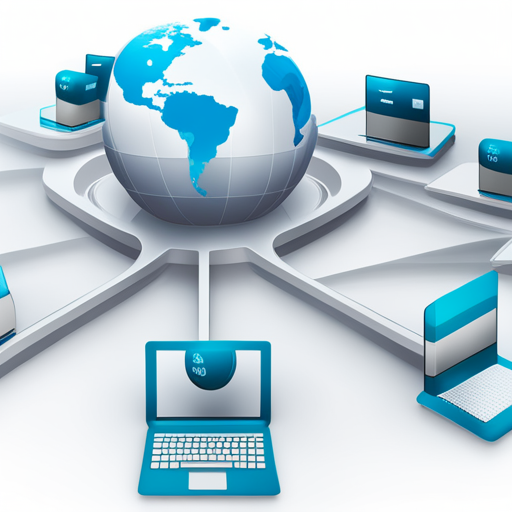Why Email Marketing Remains Essential in the Digital Age
In the ever-evolving world of digital marketing, trends come and go, but one strategy has stood the test of time—email marketing. Despite the rise of social media, content marketing, and other digital channels, email marketing remains one of the most effective ways to reach and engage with customers. In fact, businesses continue to see high returns on investment (ROI) from email campaigns, making it an essential component of any comprehensive marketing strategy.
In this article, we’ll explore why email marketing remains a powerful tool for businesses and how it can help you connect with your audience, nurture leads, and drive conversions.
The Benefits of Email Marketing in the Digital Age
1. Direct and Personal Communication
Email marketing allows businesses to communicate directly with their audience, delivering personalized messages straight to their inbox. Unlike social media, where algorithms control what users see, email gives you complete control over the message and the timing. This direct line of communication is one of the reasons why email marketing is so effective.
Personalization also plays a crucial role in email marketing. By using data about your subscribers—such as their preferences, behaviors, or past purchases—you can send highly targeted content that resonates with them on a personal level. Personalization leads to higher open rates, click-through rates, and engagement.
How to Personalize Emails:
- Address recipients by name in the subject line or email body.
- Use segmentation to send relevant offers or content based on user behavior.
- Trigger automated emails based on customer actions, such as abandoned cart reminders or post-purchase follow-ups.
2. High Return on Investment (ROI)
Email marketing consistently delivers one of the highest ROIs compared to other marketing channels. According to research, for every $1 spent on email marketing, businesses can expect an average return of $42. This makes email marketing an incredibly cost-effective strategy for reaching potential customers and driving sales.
Why Email Marketing Delivers High ROI:
- Low costs: Sending emails is inexpensive, especially when using automation and bulk email services.
- Highly targeted: Email marketing allows businesses to target specific segments of their audience, ensuring that the right message reaches the right people.
- Action-oriented: Emails encourage immediate actions such as clicking on a link, making a purchase, or signing up for a webinar, leading to higher conversion rates.
Because email marketing is so measurable, businesses can continually optimize their campaigns based on performance data, further increasing their ROI over time.
3. Building and Nurturing Customer Relationships
Email marketing is one of the most effective ways to build and nurture long-term relationships with your customers. By consistently providing valuable content, you can stay top-of-mind with your audience and keep them engaged with your brand.
Key Ways to Build Relationships with Email:
- Welcome emails: Start the relationship off right with a warm, personalized welcome email when someone subscribes to your list.
- Educational content: Provide helpful tips, tutorials, or product updates to educate your audience and demonstrate your expertise.
- Exclusive offers: Reward your subscribers with special discounts, early access to sales, or exclusive content that makes them feel valued.
When you consistently deliver value through email marketing, you foster trust and loyalty, which can lead to repeat business and long-term customer retention.
4. Automation and Scalability
One of the biggest advantages of email marketing in the digital age is the ability to automate campaigns. Email automation allows businesses to send pre-scheduled or triggered emails based on specific actions or timeframes. This means you can set up a series of emails that automatically nurture leads, welcome new customers, or remind users about an abandoned cart—without manual intervention.
Benefits of Email Automation:
- Saves time: Automation allows you to send relevant emails at scale without needing to manually manage each campaign.
- Improves engagement: By sending timely, relevant emails based on customer actions, you’re more likely to increase engagement and conversions.
- Increases efficiency: With automation, businesses can run multiple campaigns simultaneously, targeting different segments of their audience with minimal effort.
Email marketing platforms like Mailchimp, HubSpot, and ActiveCampaign offer robust automation tools that help businesses scale their efforts, making it easier to reach and nurture a large audience.
5. Measurable Results and Insights
Another reason email marketing remains essential in the digital age is its ability to provide clear, measurable results. With detailed analytics, businesses can track every aspect of their email campaigns, from open rates and click-through rates to conversions and revenue generated.
Key Metrics to Track in Email Marketing:
- Open rate: The percentage of recipients who open your email.
- Click-through rate (CTR): The percentage of recipients who clicked on a link within your email.
- Conversion rate: The percentage of recipients who completed a desired action (e.g., making a purchase or filling out a form).
- Bounce rate: The percentage of emails that weren’t successfully delivered to the recipient’s inbox.
By monitoring these metrics, businesses can gain insights into what works and what doesn’t, allowing them to optimize future campaigns for even better results.
6. Integrating Email with Other Digital Channels
Email marketing doesn’t operate in a vacuum—it’s even more powerful when integrated with other digital marketing channels. For example, you can use social media, SEO, and content marketing to grow your email list, then use email marketing to nurture those leads into customers.
Examples of Integration:
- Social media: Use social media to promote your email sign-up forms, offering incentives like free resources or discounts to grow your list.
- Content marketing: Promote your blog posts, guides, or videos through email newsletters to drive traffic back to your website.
- Retargeting ads: Use email data to create custom audiences for retargeting campaigns on platforms like Facebook or Google Ads.
By combining email with other channels, businesses can create a cohesive marketing strategy that amplifies their reach and effectiveness.
Best Practices for Effective Email Marketing
To make the most of your email marketing efforts, follow these best practices:
1. Build a Quality Email List
A successful email marketing strategy starts with a quality list of engaged subscribers. Focus on attracting people who are genuinely interested in your products or services rather than purchasing lists, which can lead to high unsubscribe rates and low engagement.
Tips for Building a List:
- Create compelling lead magnets, such as e-books, checklists, or exclusive discounts, in exchange for email addresses.
- Use pop-up forms, landing pages, or exit-intent forms to capture email sign-ups on your website.
- Promote your email sign-up form through social media and blog posts.
2. Craft Engaging Subject Lines
The subject line is the first thing your recipients see, and it plays a critical role in determining whether they’ll open your email. An engaging subject line should be clear, concise, and pique the recipient’s curiosity.
Tips for Effective Subject Lines:
- Keep it short—around 40-50 characters.
- Personalize when possible by using the recipient’s name.
- Create a sense of urgency or exclusivity (e.g., “Limited Time Offer!”).
3. Segment Your Audience
Segmenting your email list allows you to send more targeted messages based on the interests, behaviors, or demographics of your subscribers. This ensures that your content is relevant to each group, increasing the likelihood of engagement.
Common Segmentation Criteria:
- Geographic location
- Purchase history or product preferences
- Engagement level (e.g., frequent vs. inactive subscribers)
4. Optimize for Mobile
With a growing number of users checking their email on mobile devices, it’s essential to ensure that your emails are mobile-friendly. This means using responsive design, short paragraphs, and clear CTAs that are easy to tap on a mobile screen.
FAQs About Email Marketing
1. Is email marketing still effective in the digital age?
Yes, email marketing remains one of the most effective digital marketing strategies, offering a high ROI and allowing businesses to engage with their audience on a personal level.
2. How can I improve my email open rates?
Improve your open rates by crafting engaging subject lines, personalizing emails, and sending relevant content based on audience segmentation.
3. What is email automation, and how does it work?
Email automation allows businesses to send pre-scheduled or triggered emails based on specific actions (e.g., signing up for a newsletter, abandoning a cart) without manual intervention.
4. How do I measure the success of my email campaigns?
Track key metrics like open rates, click-through rates, conversion rates, and bounce rates to evaluate the success of your email campaigns and optimize them for better performance.
5. How can I build an engaged email list?
Build an engaged email list by offering valuable lead magnets, promoting sign-ups on your website and social media, and ensuring that you’re attracting subscribers genuinely interested in your products or services.
6. Can email marketing be integrated with other digital channels?
Yes, email marketing can be integrated with other channels like social media, SEO, and content marketing to create a cohesive strategy that amplifies your reach and engagement.
7. What is the average ROI for email marketing?
The average ROI for email marketing is $42 for every $1 spent, making it one of the most cost-effective digital marketing strategies.
8. How often should I send emails to my subscribers?
The ideal email frequency depends on your audience and the type of content you’re sending. Start with once a week or bi-weekly and adjust based on engagement rates.
9. How can I reduce email bounce rates?
Reduce bounce rates by regularly cleaning your email list, removing inactive or invalid addresses, and ensuring your emails follow best practices for deliverability.
10. What are some common mistakes to avoid in email marketing?
Common mistakes include sending too many emails, using overly promotional content, not segmenting your list, and failing to optimize for mobile users.
Conclusion
Email marketing remains an essential tool in the digital age, offering businesses a direct, cost-effective way to reach their audience, nurture relationships, and drive conversions. With personalization, automation, and detailed analytics, email marketing allows you to create targeted, scalable campaigns that deliver high ROI. By following best practices and integrating email with other digital channels, businesses can continue to harness the power of email marketing to achieve their goals.












